What constitutes a ‘document’ and how does it function?
According to the Oxford English Dictionary, the etymological origin is the Latin ‘documentum’, meaning ‘lesson, proof, instance, specimen’. As a verb, it is ‘to prove or support (something) by documentary evidence’, and ‘to provide with documents’. The online version of the OED includes a draft addition, whereby a document (as a noun) is ‘a collection of data in digital form that is considered a single item and typically has a unique filename by which it can be stored, retrieved, or transmitted (as a file, a spreadsheet, or a graphic)’. The current use of the noun ‘document’ is defined as ‘something written, inscribed, etc., which furnishes evidence or information upon any subject, as a manuscript, title-deed, tomb-stone, coin, picture, etc.’ (emphasis added).
Both ‘something’ and that first ‘etc.’ leave ample room for discussion. A document doubts whether it functions as something unique, or as something reproducible. A passport is a document, but a flyer equally so. Moreover, there is a circular reasoning: to document is ‘to provide with documents’. Defining (the functioning of) a document most likely involves ideas of communication, information, evidence, inscriptions, and implies notions of objectivity and neutrality – but the document is neither reducible to one of them, nor is it equal to their sum. It is hard to pinpoint it, as it disperses into and is affected by other fields: it is intrinsically tied to the history of media and to important currents in literature, photography and art; it is linked to epistemic and power structures. However ubiquitous it is, as an often tangible thing in our environment, and as a concept, a document deranges.
the-documents.org continuously gathers documents and provides them with a short textual description, explanation,
or digression, written by multiple authors. In Paper Knowledge, Lisa Gitelman paraphrases ‘documentalist’ Suzanne Briet, stating that ‘an antelope running wild would not be a document, but an antelope taken into a zoo would be one, presumably because it would then be framed – or reframed – as an example, specimen, or instance’. The gathered files are all documents – if they weren’t before publication, they now are. That is what the-documents.org, irreversibly, does. It is a zoo turning an antelope into an ‘antelope’.
As you made your way through the collection,
the-documents.org tracked the entries you viewed.
It documented your path through the website.
As such, the time spent on the-documents.org turned
into this – a new document.
This document was compiled by ____ on 03.05.2024 12:56, printed on ____ and contains 23 documents on _ pages.
(https://the-documents.org/log/03-05-2024-6051/)
the-documents.org is a project created and edited by De Cleene De Cleene; design & development by atelier Haegeman Temmerman.
the-documents.org has been online since 23.05.2021.
- De Cleene De Cleene is Michiel De Cleene and Arnout De Cleene. Together they form a research group that focusses on novel ways of approaching the everyday, by artistic means and from a cultural and critical perspective.
www.decleenedecleene.be / info@decleenedecleene.be - This project was made possible with the support of the Flemish Government and KASK & Conservatorium, the school of arts of HOGENT and Howest. It is part of the research project Documenting Objects, financed by the HOGENT Arts Research Fund.
- Briet, S. Qu’est-ce que la documentation? Paris: Edit, 1951.
- Gitelman, L. Paper Knowledge. Toward a Media History of Documents.
Durham/ London: Duke University Press, 2014. - Oxford English Dictionary Online. Accessed on 13.05.2021.

A snow-covered stainless steel and glass shelf has a note, written in red marker, cello-taped to one of the steel supports: ‘A DONNER’.
Now a park, the Place Marie Janson – colloquially called Carré Moscou or Carré Monnaies – used to house L’Hôtel des Monnaies/het Munthof. For a century, the coins of some twenty-two countries were minted in this building.
hotel_monnaies_nl.pdf
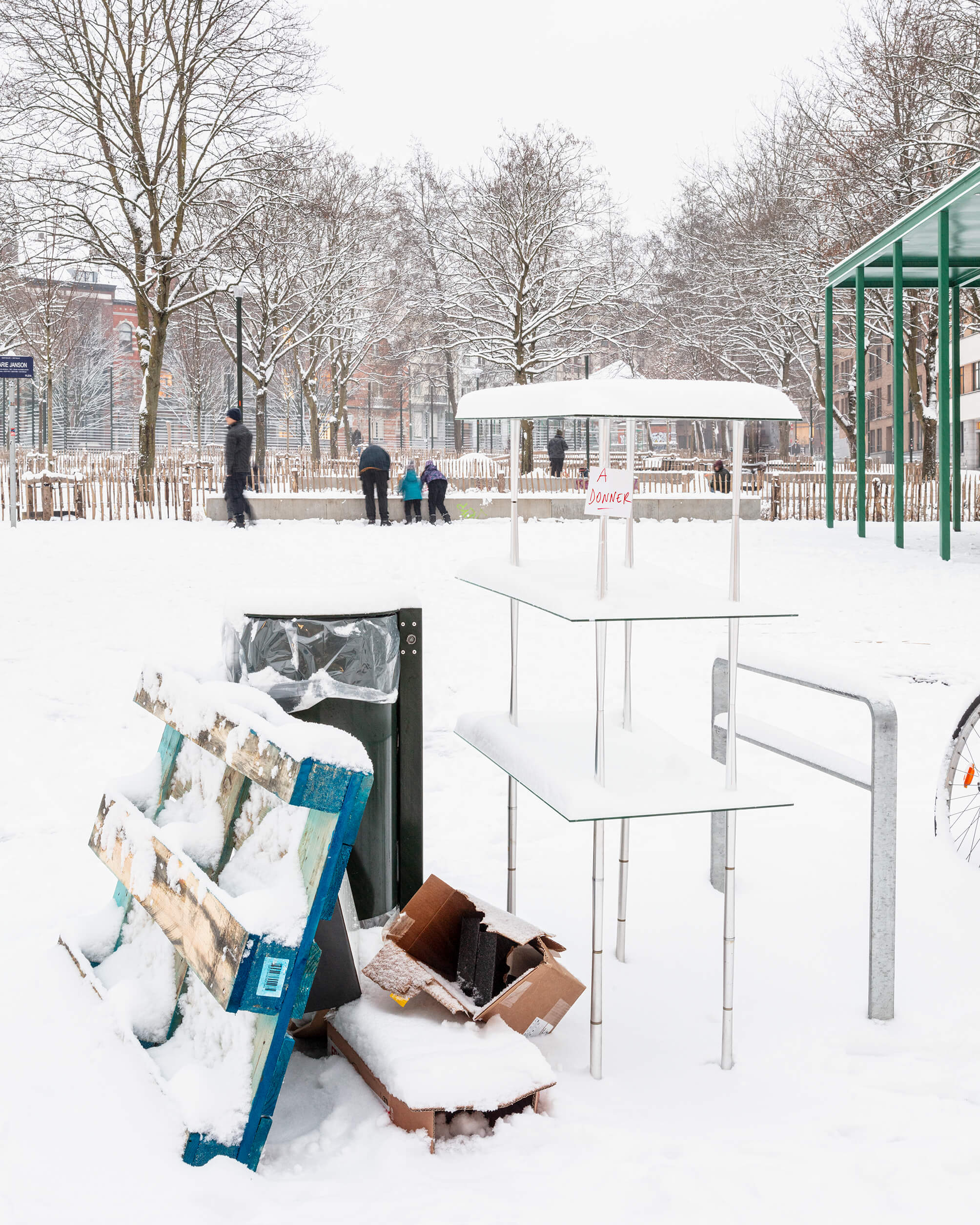
July. Our eight-month-old son has a fever. We have a hard time getting him to drink enough. The tally marks on the back of a tortellini-box keep track of the diapers he wets and the millilitres of milk and electrolytes he’s able to hold down.
Stuck inside with worrying parents, a sticker-book about a farm is his brother’s favourite pass-time. Tired of having to go back and forth between the pastures and the sticker-filled sheets we decide to use my arm as a repository for animals that share a habitat.
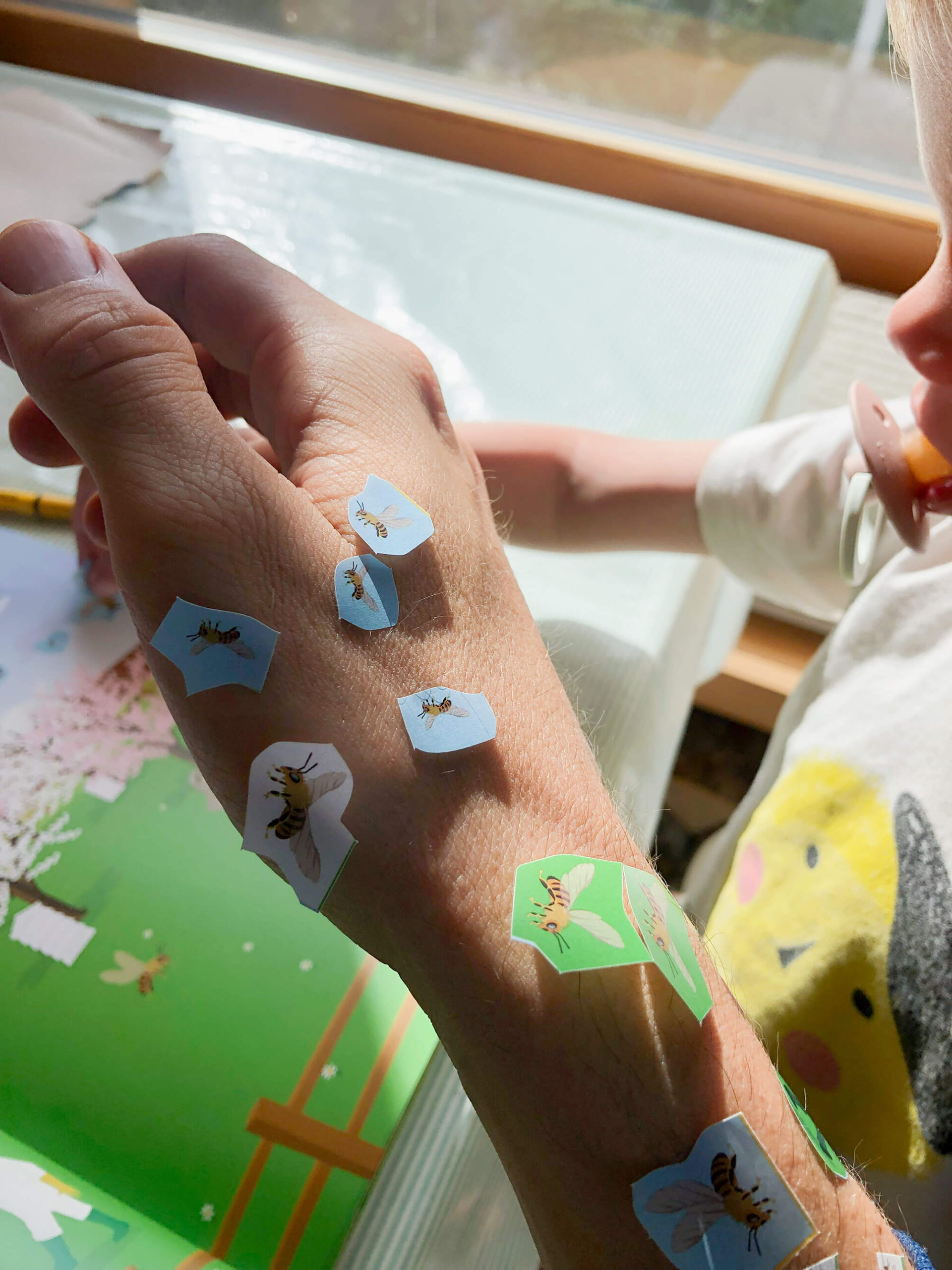
A year ago I moved into Solange’s appartement. From the balcony, I see half the parking lot and the adjacent high rise. On the mailbox, I haven’t replaced her name for mine.
1. GARAGE PAUL, (+32) 0489. 764 540 / recto-verso NL/FR
2. CASH 24, (+32) 0466 15 32 16 / recto-verso NL/FR
3. GARAGE NADIM (+32) 0470 606 474 / recto-verso NL (1)
4. GARAGE NADIM (+32) 0470 606 474 / recto-verso FR (2)
5. GARAGE GABRIEL (+32) 0489 76 45 40 / recto-verso NL (1)
6. GARAGE GABRIEL (+32) 0489 76 45 40 / recto-verso FR (2)
7. MAGNUM’s (+32) 0492 92 70 70 / recto-verso FR
8. GARAGE ROBERT (+32) 0492 92 70 70 / recto-verso FR (1)
9. GARAGE ROBERT (+32) 0492 92 70 70 / recto-verso FR (2)
I don’t know whether Solange owned a car.
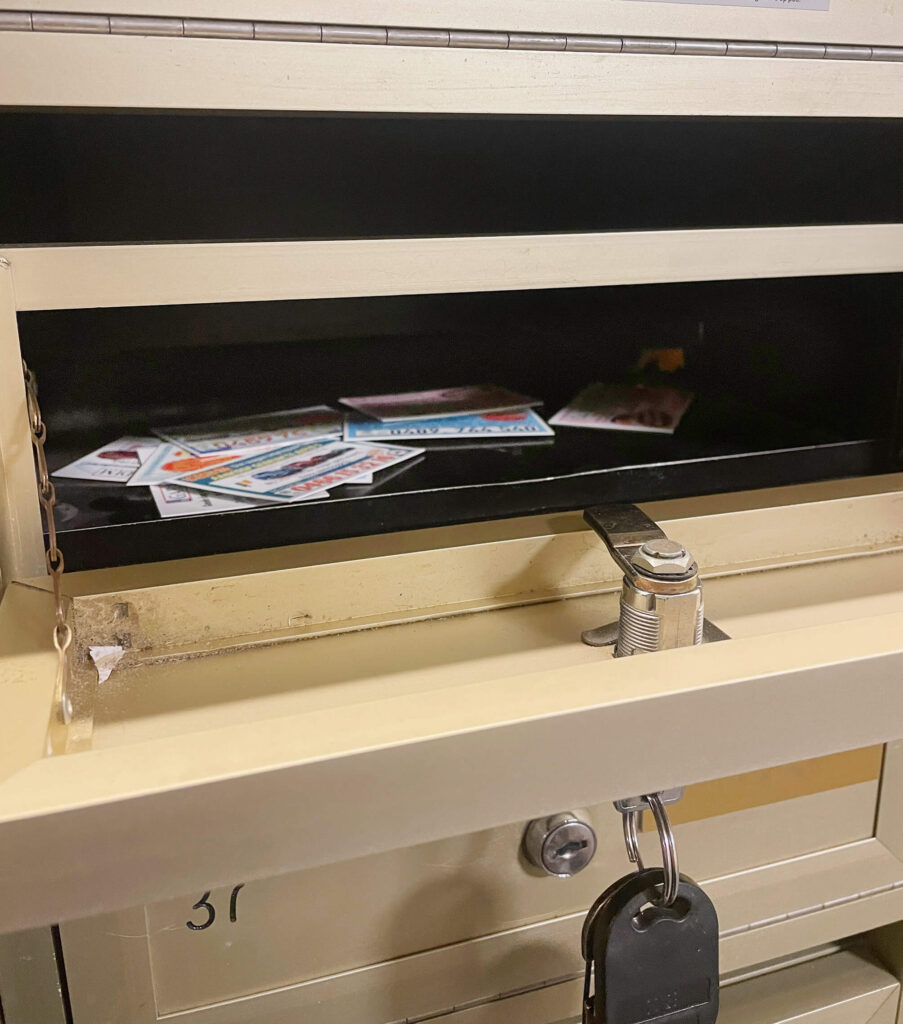
Bieke Criel, lives and works in Gent (BE). Intrigued by landscape, movement, light and the poetics of what lies in between. Does not own a car, loves to drive one. Part of 019.
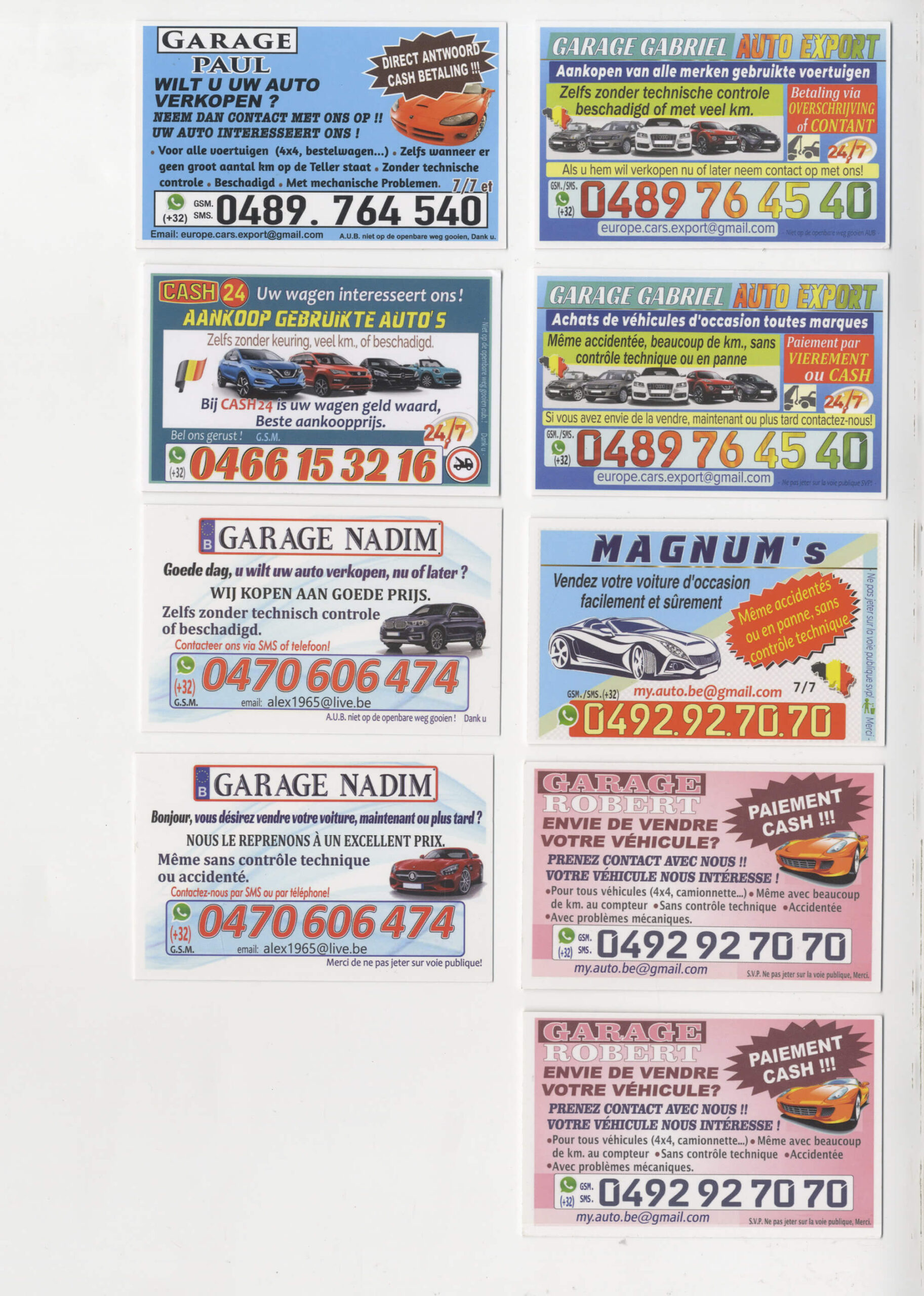
A malfunctioning of the camera leading to a double-exposed negative. The car is decisive in establishing the relationship between the superimposed photographs. In the middle of the image, we see it parked in front of the house. Slightly less visible is the same car, repeated but further away. This makes it possible to deduce that the dark outline of the house, with the roof and the chimney, is also the same house as in the other photograph. This time, the house is photographed relatively frontally (the slightly angled point of view allows to bring the shed at the back of the house in the line of sight), and from nearby. At the bottom left, the lines that make up the street help to see the continuity of the one photograph, while the electric wires at the top right aid to comprehend the other one.
The camera malfunction speculates on a future addition to the plot. The dark, outlined shed’s scale is realistic with regards to the scale of the house and itself (the shed) in the other photograph. Its position with regards to the other buildings seems logical. It imposes itself as a possible second shed for the owner to build in the next few years. In that future shed, the car, now standing in front of the house, could be comfortably parked.

Photographing the house and the clearing it stood in proved difficult. During summer, the nettles and brambles slowed down the pace. Some plants stung the elbows. The clearing only became visible when the sun fell through the opening in the canopy. On cloudy days the clearing disappeared.
‘As the order of institutions follows its course, or as huts give way to villages and then to cities and finally to cosmopolitan academies, the forests move further and further away from the center of the clearing. At the center one eventually forgets that one is dwelling in a clearing. […] Yet however wide the circle may get through the inertia of civic expansion, it presumably retains an edge of opacity where history meets the earth, where the human abode reaches its limits.’
Pogue Harrison, R. ‘The Ecology of Finitude’, in: id., Forests. Chicago, 1992, 245.

My dream hollyday We were a football
on the beach
We were a modern house.
We were a We swim in the swimming
pool.
June 2022, Marche-en-Famenne. I arrived half an hour early. Waiting for my family to pick me up at the station, near a linden tree, I found a yellow page lying on the pebbles in front of the wooden bench I sat on. It had been a hot day. The sun was finally setting. Music playing in the distance. A white Volkswagen. Windows closed. Hard basses, trembling across the road. Folded three times, the sheet of paper had the size of a DIN A7. A white BMW pulled over. Seven glass jars in a container.
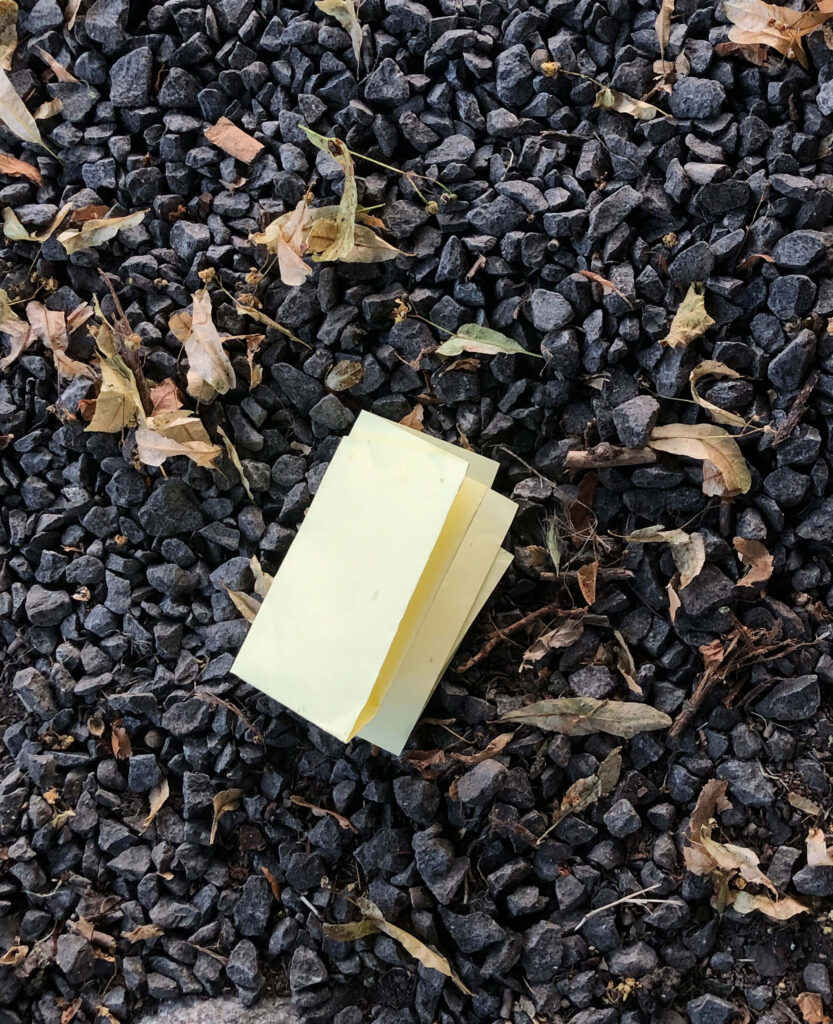
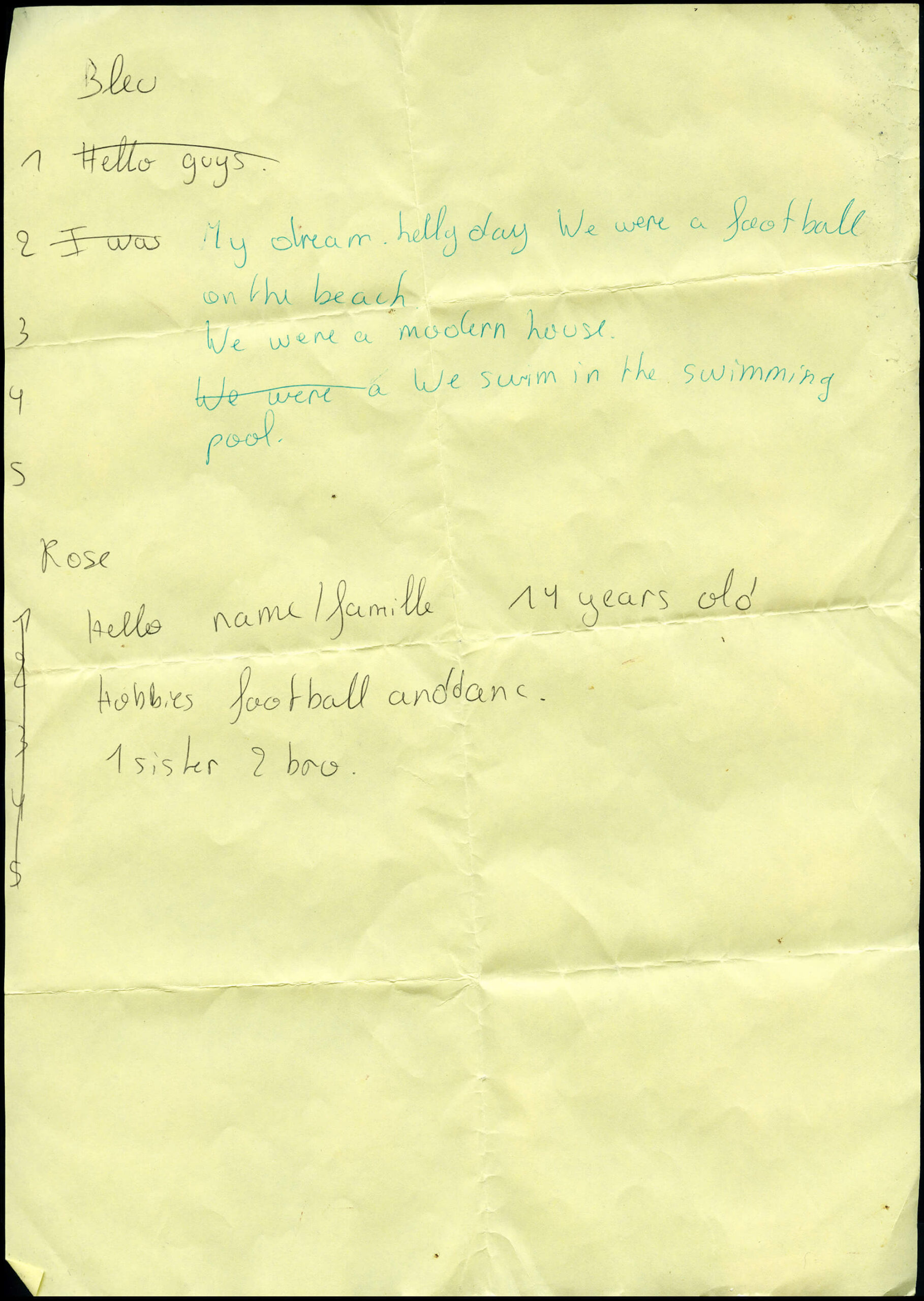
‘Meunerie Duyckers & Conors, les nouveaux moulins’, better known as ‘De Nieuwe Molens’, is a flour mill established in 1897 in the north of Gent along the Verbindingskanaal. Due to increased production, the original 1897 building doubled in 1904.
Only the facade of the iconic warehouse has been preserved along with the recently renovated gasometers. The building is now part of the Tondeliersite. It has been converted into lofts and flats, and was extended with a new construction.
https://inventaris.onroerenderfgoed.be/erfgoedobjecten/18269

The scientific exactitude sought for in the Iconographie de la Salpêtrière and the Nouvelle Iconographie de la Salpêtrière, the (in)famous scientific publications stemming from Paris’ psychiatric hospital La Salpêtrière (1876-1918), lead to an abundance of photographic images in their pages. The photographs’ ideal: ‘Trace incontestable, incontestablement fidèle, durable, transmissible’.1 The ambition of exactitude results in cold, and often cruel depictions of patients. In the digitized version of the Sorbonne library’s copies, some photographs have left an imprint on the opposite page. The knee of Charles, ‘le géant’, adds an unwanted layer upon its measures on the opposite page, while the photograph of the knee itself loses ink.2
Didi-Huberman, G. Invention de l’hystérie. Paris: Macula, 2014, 72.
Launois, P.-E., Roy, P., ‘Gigantisme et infantilisme’, Nouvelle Iconographie de la Salpêtrière, Tome XV, 1902, 548, pl. LXVI, online: https://patrimoine.sorbonne-universite.fr/fonds/item/2613-nouvelle-iconographie-de-la-salpetriere-tome-15?offset=6

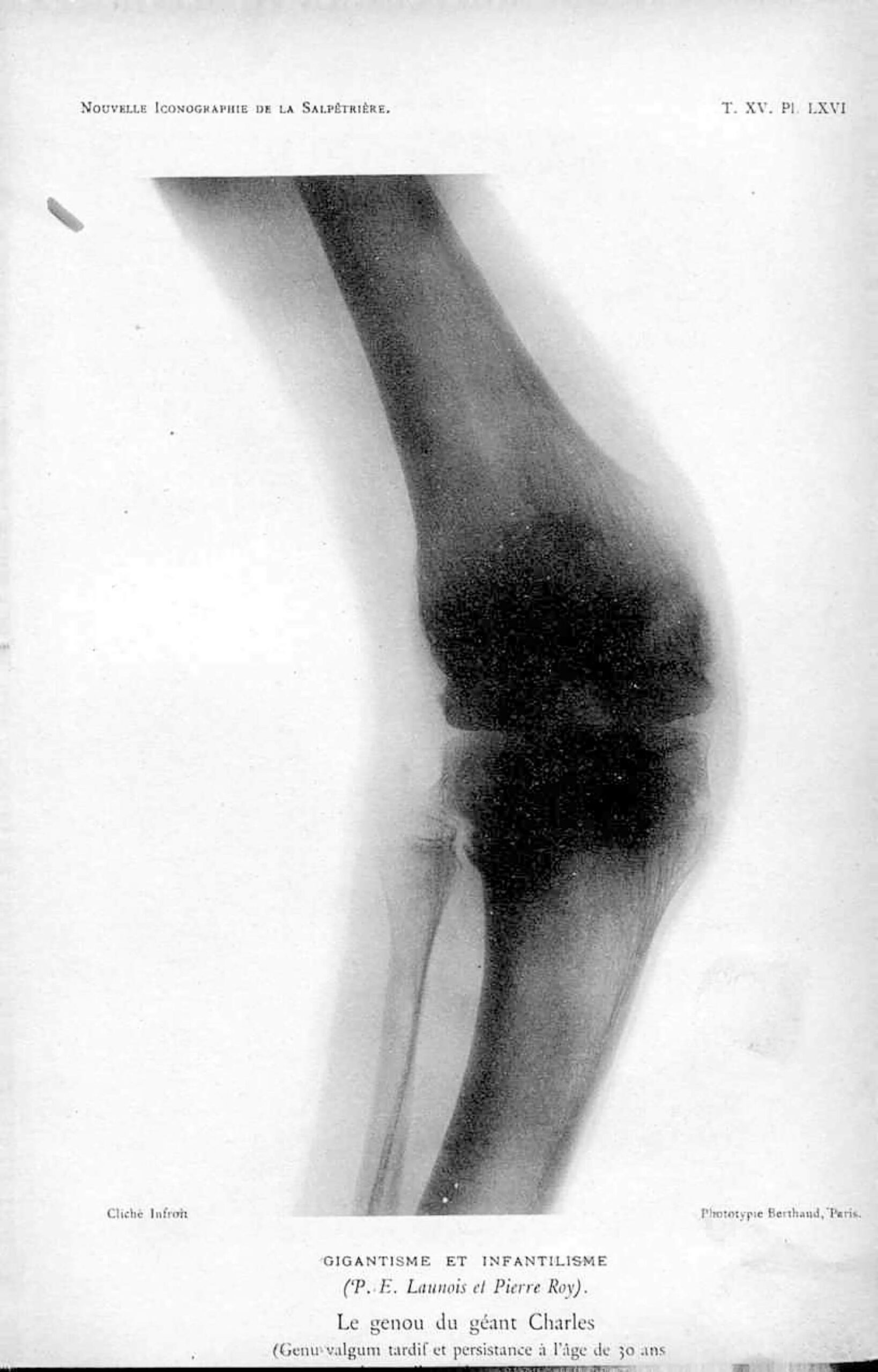
During the preparation of a seminar, I reread Pierre Bayard’s Qui a tué Roger Ackroyd? (2008). On the inside of the back cover, there’s an inscription: it appears I wrote down a license plate number – something I have the habit of doing when a situation seems suspicious.
In Qui à tué Roger Ackroyd?, Bayard analyzes Agatha Christie’s famous detective novel The Murder of Roger Ackroyd (1926). The literary critic disagrees with detective Hercule Poirot’s conclusion: Ackroyd’s murderer is not the narrator, James Sheppard, as Poirot would have it. It’s a delirious interpretation, ‘consistant à rechercher minutieusement des indices, à interpréter des faits et à organiser nos déductions en une construction d’ensemble harmonieuse’.
The car with license plate number XHD 558 is unknown to me. I can’t recall what I saw that urged me to write it down, nor the time or location when I saw it.
Bayard, P. Qui a tué Roger Ackroyd? Paris: Minuit, 2008.
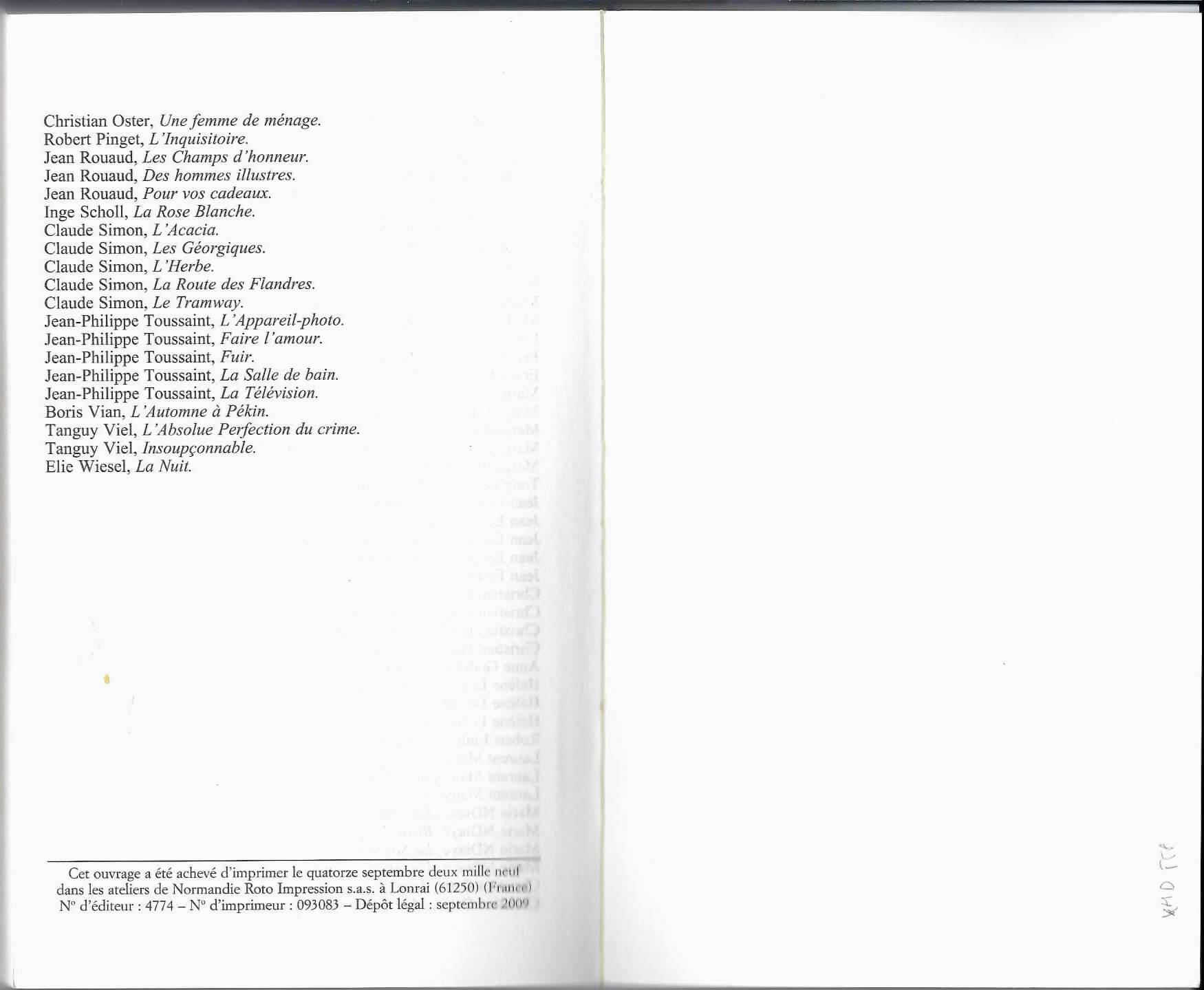
In Walter Benjamin’s The Arcades Project, Convolute Q is dedicated to the panorama. Benjamin writes: ‘Setup of the panoramas: View from a raised platform, surrounded by a balustrade, of surfaces lying round about and beneath. The painting runs along a cylindrical wall approximately a hundred meters long and twenty meters high. The principal panoramas of the great panorama painter Prévost: Paris, Toulon, Rome, Naples, Amsterdam, Tilsit, Wagram, Calais, Antwerp, London, Florence, Jerusalem, Athens. Among his pupils: Daguerre’ (Q1a, 1).
Benjamin, W. The Arcades Project (H. Eiland & K. McLaughlin, trans.). Cambridge/London: The Belknap Press of Harvard University Press, 2002, p. 528.
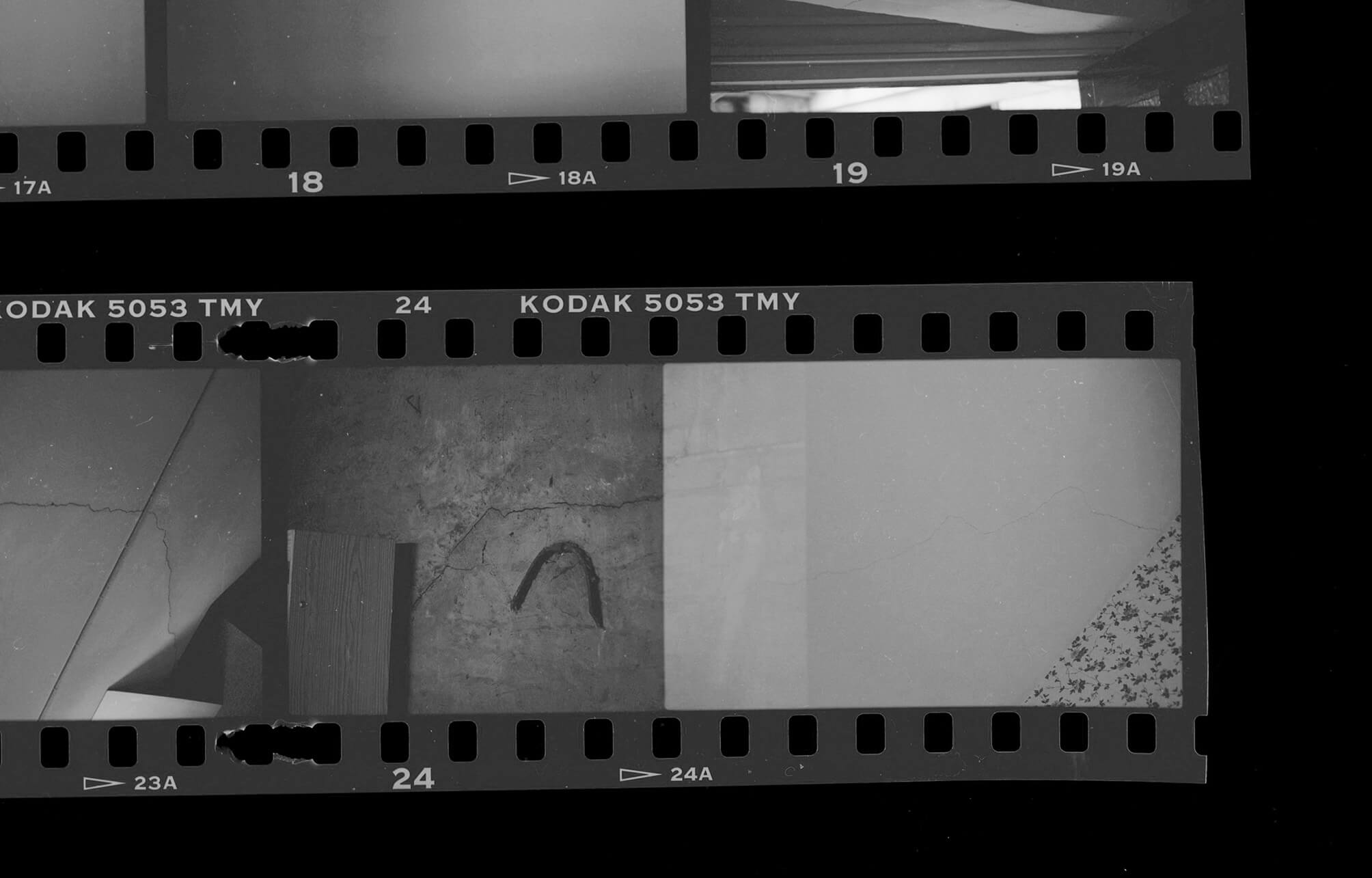
It has been snowing. A black BMW is parked on the other side of the street and is cut in half by the separation between negatives 4 and 5. Apart from a slight kink in the landscape, the negative on the right is a perfect continuation of the one on the left. The fence around the orchard, the branches of the apple tree and the power lines connect implicitly in the void between the negatives.
Based on De Cleene De Cleene, The Situation as it Is. A Photonovel in Three Movements (APE, 2022).

The architect’s photographic archive contains seven images that can be labelled as panoramic pictures. However, they only appear as such when the photographs are viewed in the archive, as strips of negatives. In order to see the panoramic construct, the viewer needs to be presented with two consecutive negatives.
There are two kinds of panorama in the archive: the kind that can only be attributed to a kind of laziness or a need for efficiency on behalf of the architect, and another that originates from frugality.
The former type of panorama is created when the architect is documenting the situation as it is: it is compulsory to document the context of the building or lot, as part of a building application. He simply pivots from left to right, capturing the first and second photograph consecutively. On the filmstrip a panorama appears.
The other kind of panoramic picture only appears at the end of the film role. The last negative on the film has been exposed (the twenty-fourth or thirty-sixth), after which he exerts force onto the lever to move the film forward anyway. Some films are known to have, by accident, a twenty-fifth or a thirty-seventh negative. The plastic between the sprocket holes tears and the film does not advance enough. The result differs fundamentally from the other kind of panorama: there is no separation, no void between the negatives. Rather, there is a slight overlap. A thin, vertical strip of film that has been exposed twice, suggesting contiguity that might not be there. The two exposures might be from altogether different sites, creating a new situation.
Based on De Cleene, M. & De Cleene, A. The Situation as it Is. A Photonovel in Three Movements. Gent: APE, 2022
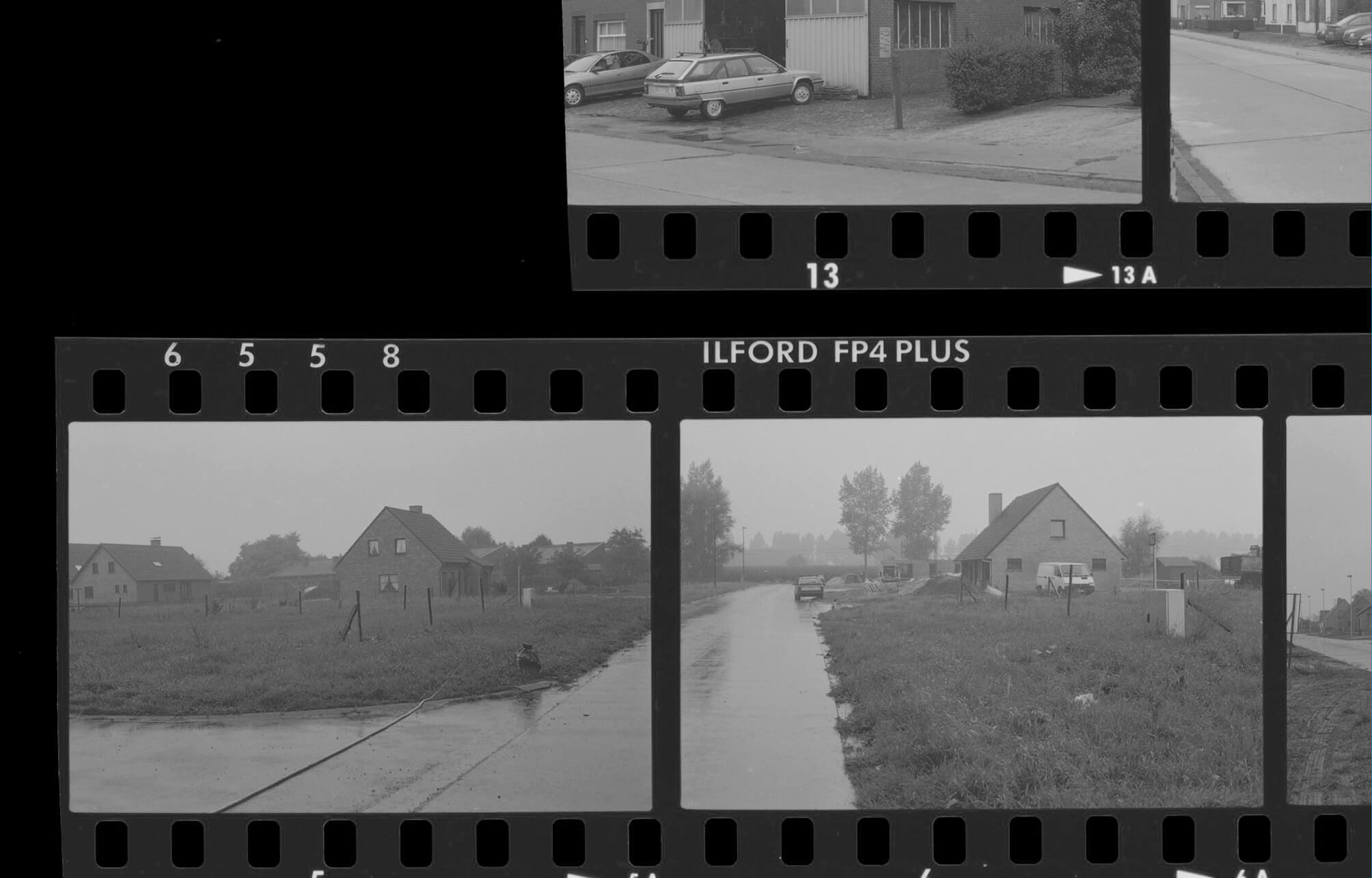
I drove through the neighborhood seeking evidence of the disruption using a power outage map as a compass. Winding through quiet streets, I stumbled upon a lone blue PG&E truck idling opposite a charred utility pole with fragments of wood and wire strewn across the pavement. I parked my car and walked toward the truck to ask the driver what had happened. He pointed to the top of the pole where a porcelain insulator dangled precariously from a high-voltage line. “Tracking,” he said curtly. “Is that like a short circuit?” I asked. “Kind of,” he replied before pausing. He finally elaborated, explaining that the problem arises when moisture from morning fog settles on power lines, creating a pathway for electricity to arc across components.
He then input something into a handheld device before driving away, leaving the repair for another service team to complete. I gathered the debris intending to collect the remaining components that comprise a utility pole, each having failed in one form or another. I shipped the fragments to Maziar the following week.
Mathew Kneebone is an artist based in San Francisco. His interdisciplinary practices takes different forms, all in relation to an interest in electricity and technology. He teaches studio and thesis writing at California College of the Arts.
[13:42] Maziar: Power out at Rib now.
[13:45] Mathew: It’s windy here today, sorry!
[13:45] Maziar: Saying from the comfort of his electrified home, or…you also have no power?
[13:45] Mathew: No, I don’t. But, typically, outages in the city are shorter than in regional areas. PG&E website estimates service within two hours…Maybe you could post a business sign on Rib’s window?1
[13:52] Maziar: Yes. Though my phone is almost dead. No light. Can you send me a text for the sign? I can’t access the drive.
[13:52] Mathew: Yeah.
[13:52] Maziar: I feel reality hitting. Not so much the reality of blackouts in the U.S., but the reality of life and work…and that it is time to go home.
[13:55] Mathew: “CLOSED NO POWER For prescriptions go to Walgreens 2690 Mission OPEN UNTIL 5 PM.”
[13:55] Maziar: Thanks.
[13:56] Mathew: Yeah, maybe it’s time for you to leave for the night. I’m going to drive around to see what’s happening.
[13:59] Maziar: Okay, enjoy.
Local businesses experiencing a blackout typically post handwritten notices on their street-facing windows. These condensed notes detail acute symptoms felt at a community level, hinting at the improvisation required to maintain social harmony.
Mathew Kneebone is an artist based in San Francisco. His interdisciplinary practices takes different forms, all in relation to an interest in electricity and technology. He teaches studio and thesis writing at California College of the Arts.

On a windy morning in April, I was on a video call with a friend, curator Maziar Afrassiabi. He listened patiently from Rotterdam as I labored over a direction for my research. It concerned a device I installed in his art space, Rib, six months prior, that monitored blackouts across California by scraping real-time data from utility companies. When a county experienced a significant blackout, it would cut Rib’s electricity in kind—causing Rib to inherit and adapt to conditions that shape Californian infrastructure. During its operation, I’d been researching the grid—learning what it is, why it fails, and how communities respond when it does.
We took a short break. Maziar, with tired eyes, stepped away for a smoke. While waiting, I watched the power lines outside my window sway limply in the breeze. In spite of its apparent lifelessness, I’ve always thought of electricity as a psychological force. My mind wandered through a cursory model of the grid, idiosyncratically cloudy and detailed.
Energy simultaneously generated and used, cascading infrastructural operations in a blink. Outlying stations burning, vaporizing, absorbing fuel, spinning vast electromagnetic turbines. Oscillating current. Neighboring transformers boosting volts to kilovolts, compensating for lost energy coursing through long-distance transmission supported by pylons peppered across Menlo Park.
Current flows into enclosed substations. Transformers, insulators, resembling a kind of industrial Watts Towers—though uninhabitable and anonymous by comparison—step voltages back down to levels safe enough for wires traversing the city. They branch out through streets via buried cables or, like the lines outside my window, are strung atop Douglas fir utility poles at roughly 30-meter intervals…curious vestigial markers. I’d read somewhere they were provisionally pitched when Samuel Morse found that telegraph signals wouldn’t transmit through the earth.
Each pole divides vertically into distinct zones, spaced apart for safety. Treacherous high-voltage wires from substations pass along the top, while safer signals—cable internet and landlines—hang nearest to the ground. The high-voltage wires enter through a barrel-shaped pole-mounted transformer. Within, submerged in oil, two tightly wound copper coils magnetically harmonize, delivering 240 and 120 volts to three exiting wires, each connected to the electrical meter attached to the building…
A blackout in my neighborhood cut my thoughts and the meeting short. The sudden silence in my apartment indicated Maziar was also in the dark. I received a text message from him and the utility company.
Mathew Kneebone is an artist based in San Francisco. His interdisciplinary practices takes different forms, all in relation to an interest in electricity and technology. He teaches studio and thesis writing at California College of the Arts.

‘The saw cuts are sloppy and appear to be made in a haste.1 The cuts are situated at a height of approximately seventy centimetres from the ground. The hill’s protected woods have seen an increase in these scattered traces of illegal logging since a rise in tax on heating fuel in October 2012. Many Greeks set about logging illegally in protected woods, mostly in the colder North of the country, but also here in Egaleo, a western suburb of Athens.’
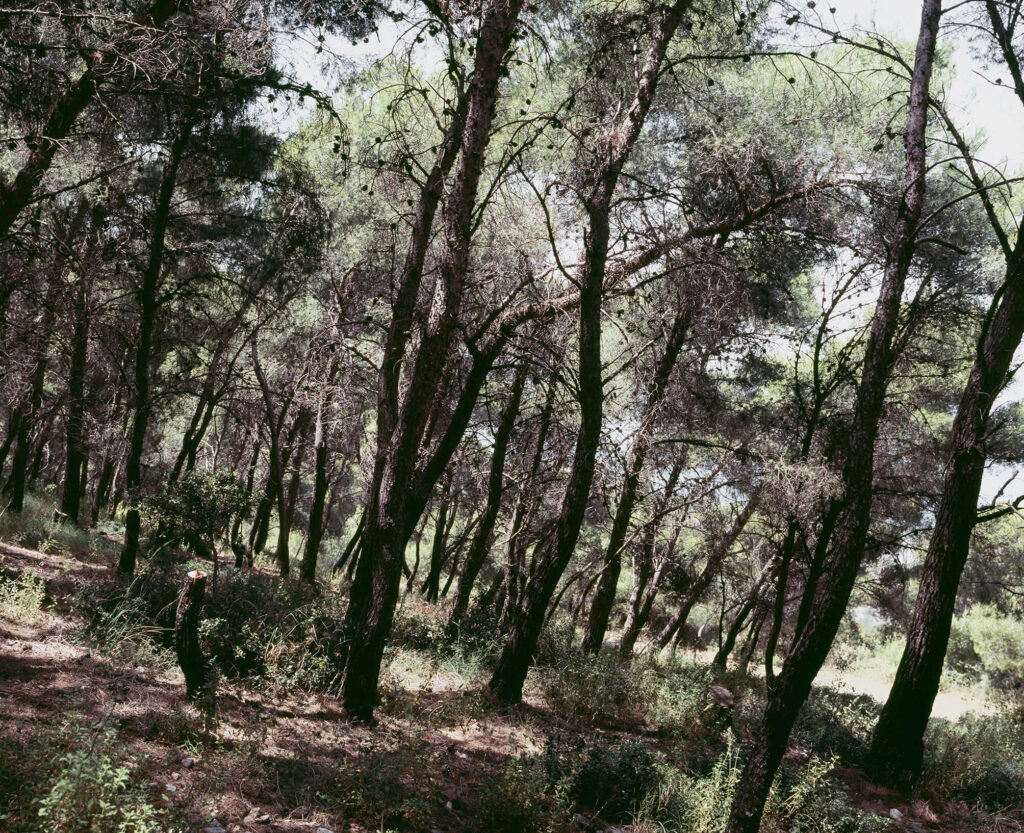
First published in: De Cleene, M. Reference Guide. Amsterdam: Roma Publications, 2019
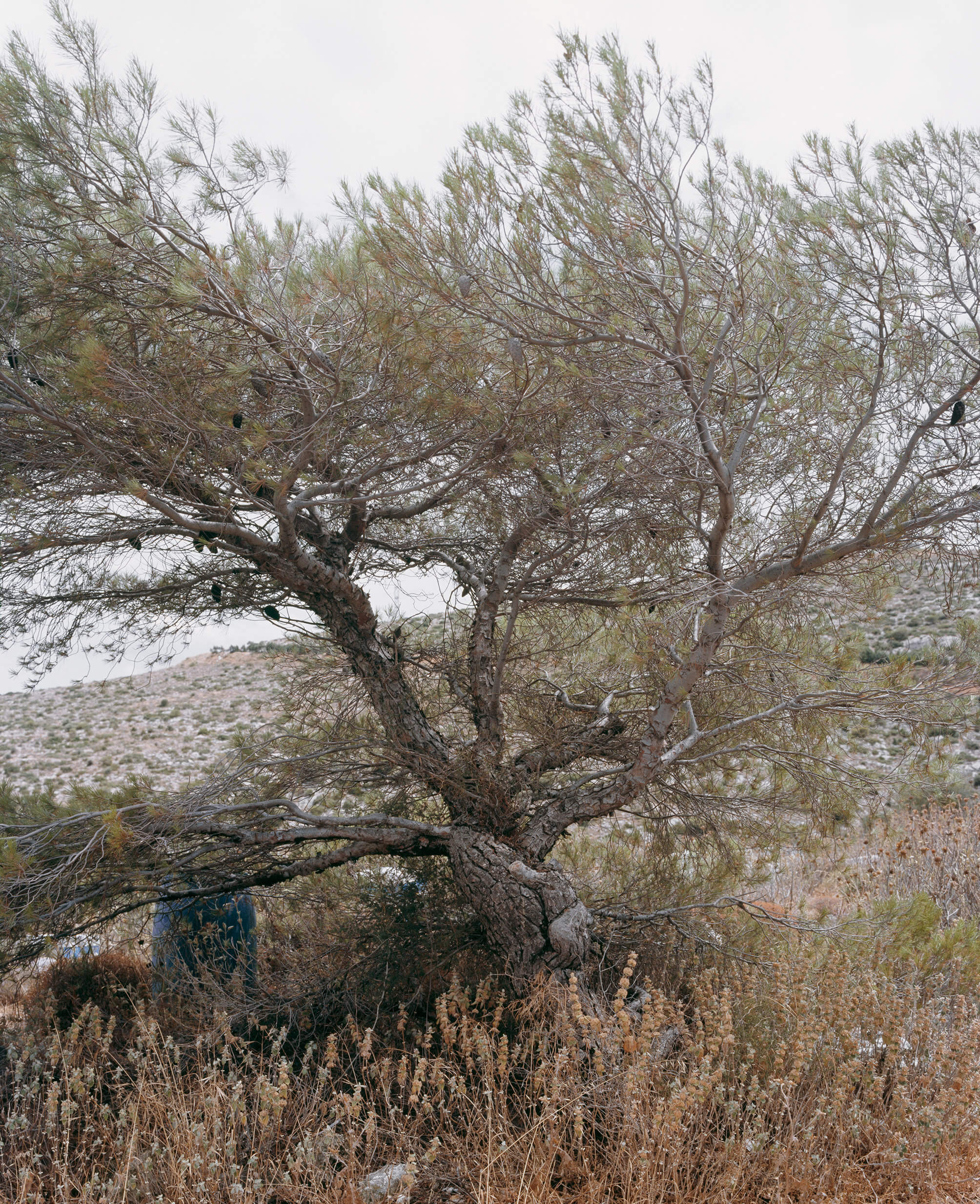
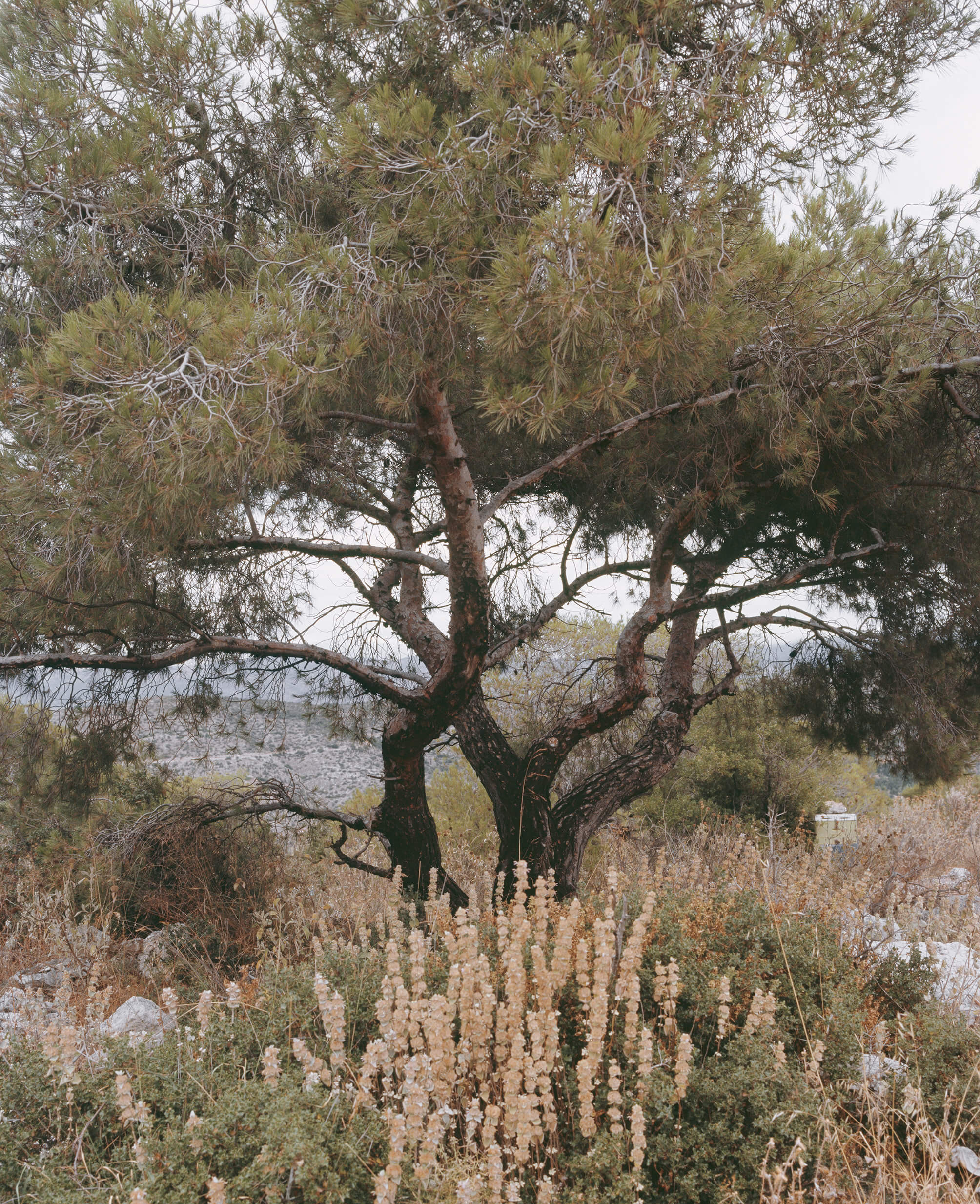
During a two hour tour, H.V. (head of the science collection) guided us from the library to the observatory and back. Along the way, he touched upon various rarities: one hundred ninety-five volumes of the Encyclopédie Méthodique (according to H.V. the most complete copy left in the world), the severed summit of Mont Blanc (‘Actually de Saussure brought back a triangular piece of rock from just below the snow line near the summit’), an original copy of the publication on the infamous Lügensteine (‘These date back to the time before the hoax was unveiled’)…
In guiding us from room to room, H.V. piled oddity upon curiosity. He showed a particular interest in all things fish-related.
First published in: De Cleene, M. Reference Guide. Amsterdam: Roma Publications, 2019

On 12 October 2022, I see a third orange Sparta K-10 listed on marktplaats.nl, after Tineke and Fred‘s. It is sold by one Fr from Zevenaar. Fr put the bike up for sale four days earlier. According to Fr, it is a ‘luxury station bike’ and ‘camping bike’. He is asking 199 euros for it. Fr explains the bike as follows:
‘Luxury sparta unisex bike with 3-speed shimano-nexus.
Striking specimen.
Looks like new.
Please note……fixed price!
Ideal for station, camping or for some nice touring.
Equipped with:
Front and rear battery lighting
Handy front and rear luggage rack
All-terrain tyres
3-speed gearbox
Comfortable drifter saddle
Integrated cable lock
Large dingdong bell
A real eye-catcher’1
According to Fr, the price is fixed, but on the website you can make an offer, albeit only from 199 euros. Fr’s Sparta K-10 has three gears. The Sparta K-10s of Tineke, John and Fred that are still for sale do not have gears, the Sparta K-10s in Rue Verte in Brussels and on cyclonewebshop.be do not have them, and in the 2011 Sparta leaflet we did not see that option either. In short, we come across a Sparta K-10 with gears for the first time. There is a small typing error in Fr’s explanation in Dutch – the t in geïntegreerd is missing – but those who like to browse on marktplaats.nl read smoothly over that. One of the photos of Fr’s ad shows the loop attached to the back of the bike. You can clearly see how that loop forms the end of an integrated cable lock.
‘Luxe sparta unisex fiets met 3 versnellingen shimano-nexus.
Opvallend design exemplaar.
Ziet er uit als nieuw.
Let op……vaste prijs!
Ideaal voor station, camping of zo om lekker mee te toeren.
Voorzien van:
Batterijverlichting voor én achter
Handig bagagerek voor én achter
All terreinbanden
3 versnellingen
Verende zadelpen
Comfortabel drifter zadel
Geïnegreerd kabelslot
Grote dingdong bel
Een echte eye-catcher’
Lars Kwakkenbos lives and works in Brussels and Ghent (B). He teaches at KASK & Conservatorium in Ghent, where he is currently working on the research project ‘On Instructing Photography’ (2023-2024), together with Michiel and Arnout De Cleene.

How slanted is this saddle? Anyone looking at the full photo of this Sparta K-10 might think that the street fence is pushing its saddle down at an angle. However, the bike and its saddle are leaning against the fence, they are not pushed under it. Whether the saddle is as slanted as the photo suggests, we are not sure. This detail of the photo suggests otherwise. The rail to which the saddle is attached is already mounted slightly less slanted than the line of the fence behind which the saddle is partly hidden, and above that part of the fence something vaguely protrudes from the back of the saddle. Presumably that is the edge of the saddle, which would reassure us about the cyclist’s comfort.
Lars Kwakkenbos lives and works in Brussels and Ghent (B). He teaches at KASK & Conservatorium in Ghent, where he is currently working on the research project ‘On Instructing Photography’ (2023-2024), together with Michiel and Arnout De Cleene.

The company Demuynck from Heist (B) has put the 2011 brochure of Dutch bicycle manufacturer Sparta on yumpu.com as an ePaper. According to yumpu.com, this was reportedly done on 28 September 2013. The leaflet is titled ‘Collection Overview 2011’. On pages 68 and 69, the bike is called K10, the frame says K-TEN, while a version presumably a bit older is usually for sale second-hand as K-10. The K10 is a ‘practical, compact city bike’, it is available in one unisex frame size 50 and it has an integrated cable lock. There is a loop at the back of the large tube to which the rest of the frame is mounted. This might be the end of that lock. There are optional carriers, front and rear, and there is an optional lighting kit. The recommended retail price is 299 euros.
Lars Kwakkenbos lives and works in Brussels and Ghent (B). He teaches at KASK & Conservatorium in Ghent, where he is currently working on the research project ‘On Instructing Photography’ (2023-2024), together with Michiel and Arnout De Cleene.

According to @missbluesette, the green K-10 put up for sale by Fred from Zwolle that I came across on marktplaats.nl on 29 September 2022 is not green, but blue. The colour resembles turquoise, I explain, a colour I have always called green. No, turquoise is not green, but blue, she replies. And the texts of my Instagram posts are too long, she says, so she doesn’t read them.
Lars Kwakkenbos lives and works in Brussels and Ghent (B). He teaches at KASK & Conservatorium in Ghent, where he is currently working on the research project ‘On Instructing Photography’ (2023-2024), together with Michiel and Arnout De Cleene.
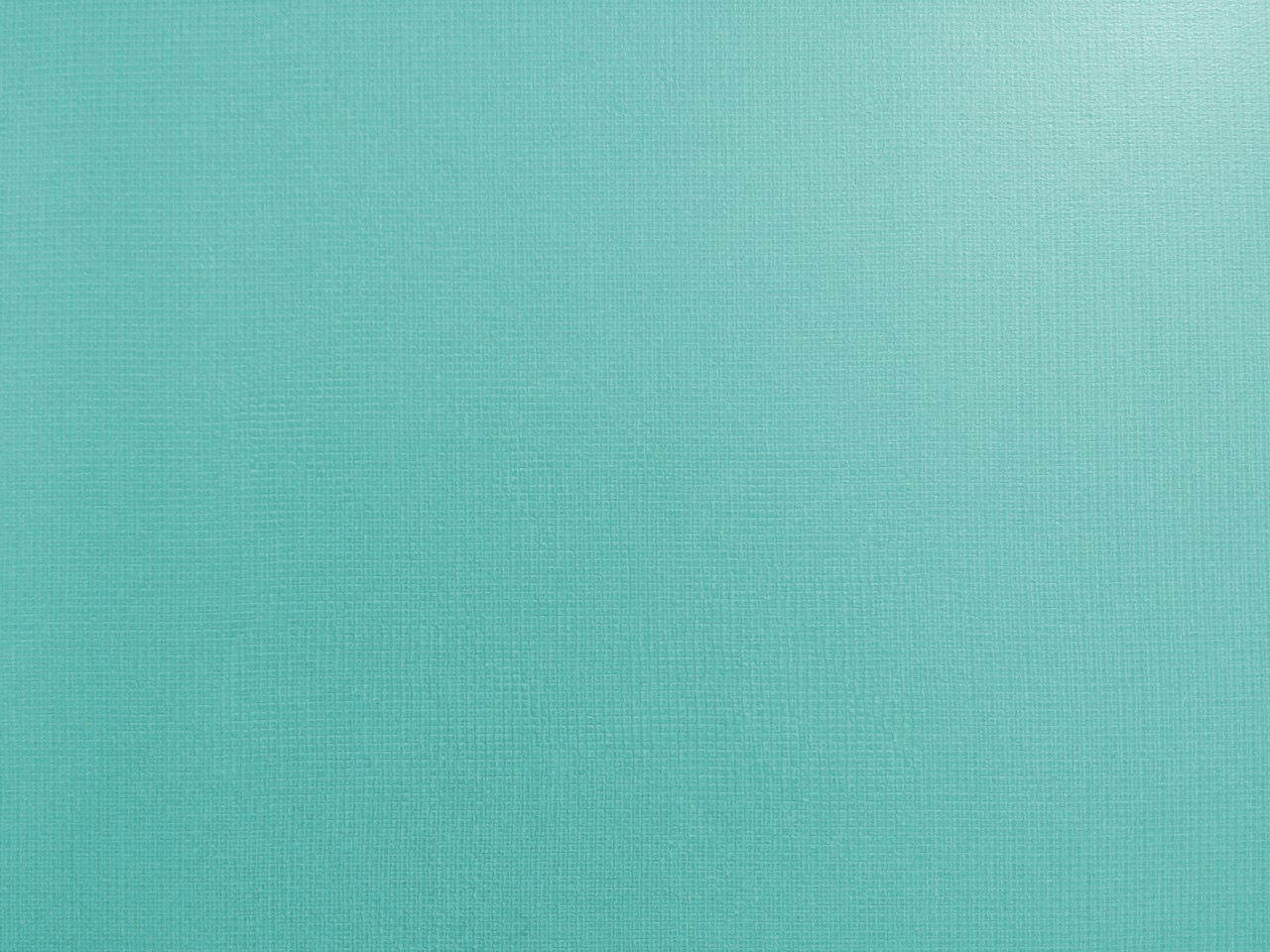
Fred from Zwolle offers two Sparta K-10s on Marktplaats.nl on 29 September 2022. The asking price for the two bikes is 250 euros, bids may start from 200 euros. The green bike has a front light that is powered by a rim dynamo, while in another photo we see a front light on the orange bike that is presumably battery-powered, as may be the case for the rear lights. The carrier mounted at the front of the green bike is clearly a luggage carrier, as is the one at the back. What the carrier mounted at the front of the orange bike is for, is unclear. The description of the bikes does mention the function of the loop protruding from the frame at the back of the Sparta K-10:
‘20-inch bikes that we have always used while camping. No gears but smooth and light pedalling. Ideal for running small errands close by or a quick errand in the toilet building. They are light and quite short making them easy to take on the train. Ideal as a short-distance bike between station and work. Both are, furthermore, in good condition. Each bike comes with a key for the integrated cable lock. Are listed as a ladies’ bike but I (male) get on just fine.’1
’20 inch fietsen die wij altijd tijdens het kamperen hebben gebruikt. Geen versnellingen maar soepel en licht trappend. Ideaal om kleine boodschappen dichtbij te doen of een snelle boodschap in het toilet gebouw. Ze zijn licht en vrij kort waardoor ze makkelijk mee te nemen zijn in de trein. Ideaal als korte afstandfiets tussen station en werk. Beiden zijn verder in goede staat. Van elke fiets beide sleutels aanwezig voorzien van een geïntegreerd kabelslot.Worden als damesfiets genoemd maar ik (man) kom er prima mee vooruit.’
Lars Kwakkenbos lives and works in Brussels and Ghent (B). He teaches at KASK & Conservatorium in Ghent, where he is currently working on the research project ‘On Instructing Photography’ (2023-2024), together with Michiel and Arnout De Cleene.

On 29 September 2022, I find a picture of a new Sparta K-10 on the website of cyclonewebshop.be. The bike is matt black and has a chaincase and a nice luggage rack at the front. The typical loop at the back is less noticeable in this photo. This is partly due to the colour of the bike.
Lars Kwakkenbos lives and works in Brussels and Ghent (B). He teaches at KASK & Conservatorium in Ghent, where he is currently working on the research project ‘On Instructing Photography’ (2023-2024), together with Michiel and Arnout De Cleene.
